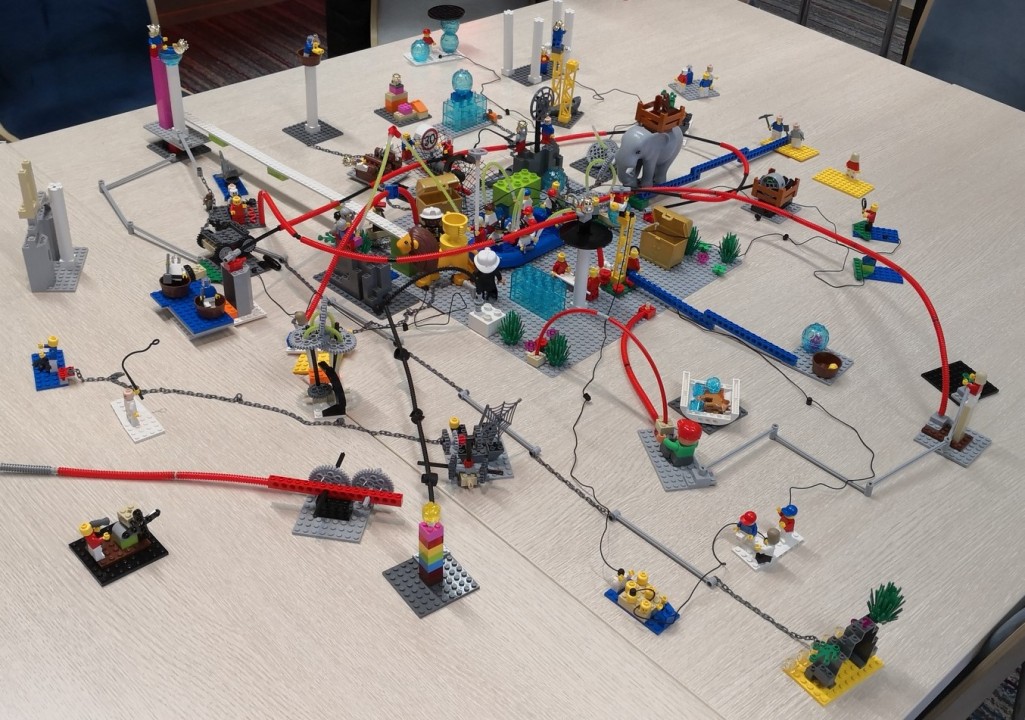What is one of the main goals of Lego Serious Play (LSP)? It facilitates meetings where it is extremely important that we overcome habitual thinking and where we need the maximum available knowledge, input, and attention of everyone involved in order to reach our goals.
You’d think we, as adults, are mature enough to have these kinds of meetings all the time. Turns out we’re not. Do me a favour and try reading a body language of everyone in the next meeting you’re in. Try to define their (or your) input level. Often you’ll end up in a 20/80 situation where 20% of the participants are talking for 80% of the time, directing the meeting or pushing their viewpoint whilst pretending (often unconsciously) they value or listen to those of their colleagues. Now transpose this meeting or workshop where the outcome is very important (say you’re defining the strategic direction for the next 3 – 5 years) and you only tap into 20% of the knowledge in the room.
This is where LSP can help out by using the same 4 core steps over and over again
The core steps of Lego Serious Play:
- Core step 1: Posing a question: the facilitator poses a question or challenge
- Core step 2: Building a personal model: Everyone builds their answer to that question using Lego bricks. The available bricks are designed to inspire the use of metaphors and story making
- Core step 3: Sharing the model: Everyone is invited to share their model with the other participants. This ensures 100% participation and 100% distribution and understanding of the knowledge.
- Core step 4: Reflecting on the model: Try to distil some insights, points of attention, clarifications in relation to the model.

You probably recognize these core steps as something that is used in workshops all of the time in the form of post-it notes. And so far, the involvement of LEGO is no different than those post-its. Everyone gets a chance to think for themselves and voice their own answer. The LEGO bricks add a new dimension to this by breaking your habitual thinking and by making the conversation more “safe”. Just like “doodling” helps you to focus and concentrate, physically handling tangible 3D objects stimulates your thinking and it guides you to answers and knowledge you were unaware of. I could start linking out to tonnes of articles deep-diving into “hand knowledge”, followed by “constructionism”, etc. but you’d just get bored. I know I do. But I’ve seen and experienced many times that people build something, only to be surprised by themselves when telling the story of the model they just built. The model is also where the “safety” aspect comes into play. You’re actually describing a model. As a facilitator, we will also guide every conversation in such a way that it is about the model that is built and the concept or metaphor behind it, not the person who built it.

